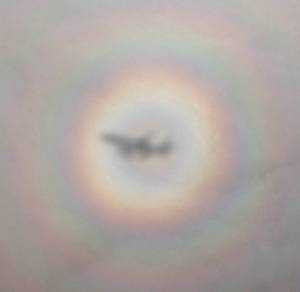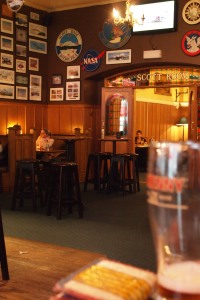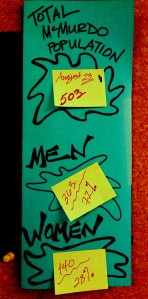Kia Ora (pronounced as one word – Keyora) literally translates to “be well”, or “be healthy.” It is a traditional Māori greeting that today is widely used much like a Hi, Hello, Welcome, or G’Day. Kia Ora is also the title of Air New Zealand’s complimentary in-flight magazine, which is where I first came across the word while taxiing down the runway just before leaving LAX, the country, and my frenetic state of mind.
I was actually looking forward to the flight from L.A. to Auckland. I had never crossed an ocean, or even been in a plane large enough to do so. The 13 hour flight was the first time in three days that I was going to be able to get some sleep, and the first time in about three years that I had nothing else to do, or nowhere else to be.
To my right was a window; to my left was Daniel Leite, a 22 year-old student from Brazil who was in the middle of his own trip around the world. After a brief discussion on Brazilian music, politics, and women, I passed out, and didn’t blink again until we were awoken by the captain, just in time for breakfast and only 90 minutes outside of Auckland, NZ.
It probably should have bothered me that it was only 8:00 AM. But hell, I had just crossed an ocean, lost a day, gained some rest, and had quickly adapted to the lifestyle in New Zealand. Besides, it’s bad luck not to have a beer in an airport, especially one you’ve never been to before. The bartender recommended an ice cold Speight’s draft, and it only lasted about as long as our conversation.
It was only one more flight, along with some beautiful scenery, a cup of tea, and some “Lolly Mix” before we touched down in Christchurch. If I would have only known that Lolly Mix is the Kiwi-version of Gummy Bears, I would have gotten the peanuts…
Christchurch has been a hub for many Antarctic expeditions dating back to the 1800’s. Both Robert Falcon Scott and Earnest Shackleton used Christchurch and the neighboring port of Lyttleton as a provisioning and departing point for their Antarctic expeditions.
Even those not departing from Christchurch recognized it as the “Gateway to Antarctica,” and these Antarctic connections have added to the cultural and economic base of the city. Today Christchurch serves as a major base of operations for the Italian, New Zealand, and United States Antarctic Program’s (USAP).
The International Antarctic Center is also located in Christchurch, which provides base facilities for the USAP, and also offers a museum and visitor’s center where the public can “experience” Antarctica.
After meeting up with some friends, we dropped our bags at the Commodore Hotel and headed into town. Our first stop was Bailie’s Bar. Bailie’s, an Irish pub, has been the place to find Antarctic hopefuls since 1863.
Inside, you’ll find a myriad of autographed pictures, artifacts, and memorabilia from Antarctic expeditions dating back to before Scott’s Terra Nova Expedition of 1910. Fellow USAP participants were always easy to spot, and Bailie’s became a good place to meet and mingle before heading down to the ice.
It was also the first place I had been that really connected me to the program, people, and continent to which I was about to venture.
Saturday night ended unusually early because of my appointment at the USAP Clothing Distribution Center (CDC) early the next morning. The CDC houses over 200,000 pieces of Extreme Cold Weather (ECW) gear required to live and work in Antarctica. All USAP participants must go through the CDC to be issued their ECW gear before departing to the ice.
Upon arrival to the CDC, we entered a room piled high with orange gear bags. Unfortunately, I would come to find that the odds of finding your gear bags were actually better than the odds of finding a date once arriving to McMurdo.
It took a couple of hours to find, fit, and exchange all of my ECW gear before I finally had a set that worked, but before leaving I took a moment to stare proudly at my name tag which was velcroed to the front of “Big Red.”
It was Christmas Eve, almost 20 years ago, that I last lay in bed with as much excitement, anxiety, and anticipation that had kept me awake that particular night. The 3:00 AM wake up call was not necessary, as I had already showered and packed well before the shuttle arrived and drove us to the CDC.
As I dressed in my ECW gear required for the flight, I realized that the previous day’s dress rehearsal did little to kill what butterflies still lingered in my stomach, and I found myself repeating a phrase common to my years as a soccer player and coach… It’s game time
After a quick breakfast at the International Antarctic Center, all 126 scientists, civilians, vagabonds, and voyagers were searched, sniffed, and scanned before checking our bags and gathering in a small room where we watched a short video on Antarctic safety.
The smokers were given one last opportunity to calm their nerves before we all piled into buses for the short drive to the tarmac, where a C-17 awaited our boarding and eventual departure.
My second trans-continental flight in two days was not nearly as comfortable or familiar as the first. Boarding the C-17 went rather quickly, as the lack of windows and exit rows made your seating choice arbitrary, and there were no overhead bins to slow you down.
The stewardess’ skirts were replaced by less-flattering green jump-suits, who instead of handing out ear-phones to enjoy the in-flight movie, gave us ear plugs to save our hearing during the extraordinary loud five hour journey. Our lunches were served in a brown paper bags and were eaten off of our laps, which doubled as tray our tables. Luckily, the peanut butter and jelly sandwich was not very messy, because my T-shirt took the place of the warm, moist towelette.
The sole lavatory was located in the front of the plane, right next to the water coolers, and these two lines merged as people waited to fill their Nalgene’s and/or the plane’s holding tank. Although no one really understood why, we could not flush the toilet for almost two hours after takeoff as we allowed it to “build up pressure.” This made for an extremely fragrant, ironic, and, I thought, humorous scenario.
It wasn’t long before the cockpit tours ended, bathroom line cleared, and paper bags made their way to the trashcans. We bundled up, then buckled up as we made our final descent and prepared for landing. The anticipation of our arrival was heightened by the absence of windows and the disorientation that accompanies it.
That million dollar question was finally answered when the wheels touched down and grinded along the frozen, jagged, ice shelf, overpowering the sound and vibration of the four jet engines which safely got us to Pegasus Air Field.
We taxied for some time before the plane finally came to a stop and our seat belts were removed. As the steps were lowered and we began to file out, your skin knew you had arrived long before your eyes could verify it.
The first things to freeze were the tears, quickly followed by the tips of my fingers, then the snot in my nose. No matter how long or by what means you mentally and physically rehearse, nothing can prepare you for the -40°F temperatures we first encountered that afternoon.
The slow drive into town was spent scraping the frost off the inside of the windows, as it was hiding some rare and beautiful nacreous clouds that were visible during the few short hours of twilight that afternoon. Their iridescent colors shone in stark contrast to the surrounding landscape, and much like a rainbow on a stormy day, these mother-of-pearl skies brought us a sense of affirmation and confidence.
Eight miles later, this oil-slick in the heavens departed, as our attention focused on the metropolis that resurrected itself among the mountains ahead. Although this new land was industrialized and mechanical, it was also self-sustaining and alive. It was a different shade of beautiful, and would serve as my home, family, entertainment, and livelihood for the next six months.
As we approached town, the pictures that were once vague in my mind became focused and concrete, and although I was a foreigner to this new land and climate, feelings of calmness and familiarity came over me.
It as if I had been here before, and this moment of déjà-vu continued as our entourage pulled into town, and was greeted by those who had not seen any fresh faces or vegetables since February.
As names, hugs, and handshakes were exchanged, the roots that hold this all together had already begun to grow, and we were quickly being thrown into the mix of people and personalities that make this such a special place.
The world converged upon us. More than just lines of longitude, the diversity of ideas and attitudes combined to form an atmosphere of vigor and verve, and although we were almost at the bottom, I felt like I was on top. We had arrived to McMurdo Station, the trading post for those venturing to all points of this frozen continent. The months ahead would undoubtedly be filled with new encounters and experiences, and only from my willingness to absorb, learn, and grow from them all could I be compensated for everything it took to finally be here.
On September 4, the city of Christchurch was hit by a magnitude 7.0 earthquake. While there was little damage to the USAP facilities, and no delays are expected for the coming of mainbody, many people at McMurdo were deeply saddened and concerned for our friends and neighbors to the north. Please keep the residents of Christchurch and the surrounding area in your thoughts and prayers.

Mississippi born and raised, Mark Walsh spends his time these days in Antarctica as a weather weather observer at McMurdo Station. The Frozen Toe is an outlet for his stories, photos and observations about life on the ice. He is also the founder of Barefoot Wallets, wallets for the adventure traveler, which comes in an assortment of colors and designs.













